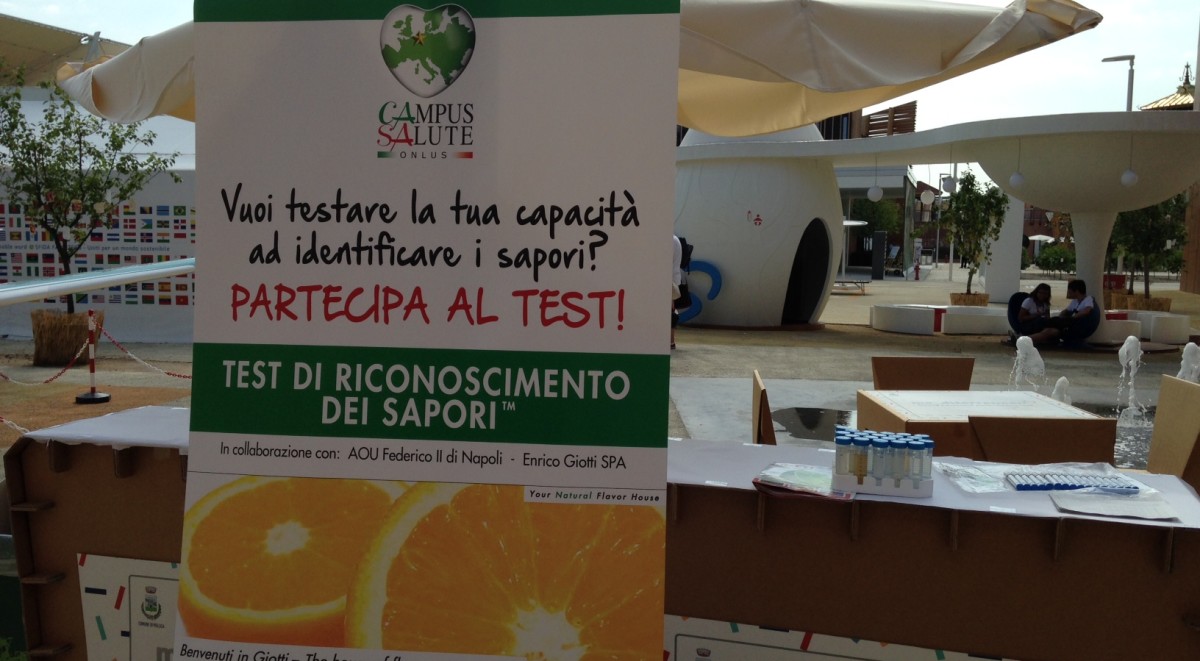
In the beautiful backdrop of dozens of pavilions representing various countries of the world, in a walkway of colors, traditions and customs in the Health Campus non-profit organization on July 10 has landed at Expo! The food sample is extremely varied: between dishes and local vegetables, herbs and spices, the taste is frankly dominant theme of the International Exhibition in Milan.
With this background, therefore, it could not miss an unprecedented event, all weblog Campus. In the halls of the KIP (Knowledge, Innovations, Policies, for the UN Millennium Platform) International School, the Campus has introduced the innovative TEST IDENTIFICATION OF TASTE, a diagnostic tool sensorineural can highlight the individual’s ability to perceive flavors . After depositing the invention to the Patent Office, it is the second public demonstration of the test after the debut in Piazza del Plebiscito in Naples. The test is simple, consisting of a series of identical containers, in which are dissolved a number of different aromatic products (thanks to the contribution friendly by dell’aromatificio Enrico GIOTTI spa). An aliquot of each aromatic substance, indistinguishable in the eyes, is administered sequentially. After each engagement, you are asked to identify the aromatic choosing a correct answer among the five proposals. Many visitors, Italian and not, you are presented to take the test, intrigued by containers or brightly colored gazebo. Even the specialists in the food, abundantly represented at Expo 2015, has joined the initiative.
In addition, in collaboration with the Institute Hotelier “Enzo Ferrari” Battipaglia (SA) and the Municipality of Pollica (SA), the Campus held a lecture to many young students engaged in gastronomy exploring the streets of taste and anatomical smell.
The identification test of flavors made the subject of a recent publication which has covered the study of young people suffering from a rare disease with involvement congenital smell (Kallmann syndrome) (see. Maione L. et al., DOI 10.1007 / s12020- 015-0690-y). It allows, with a good margin of error, to identify, even in apparently healthy subjects, the presence of disorders of smell, which may take place in pathologies of otorhinolaryngology, endocrinological, neurological and neuro-degenerative.
Already many have been screened through the prevention campaigns of Health Campus Onlus. Does it seem easy to guess the aromas? Try it!
